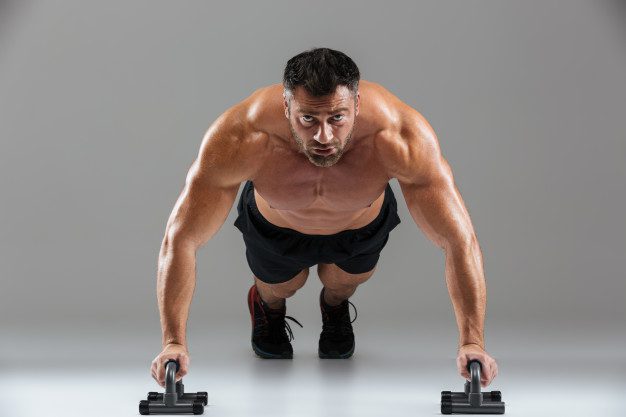A long time ago, actually let’s be honest, even these days people are of the misconception that strength training is a vanity thing. Young people do it to look good, right? Wrong! As Exercise Physiologists, when asking patients about their experience with strength training, it is not uncommon for us to hear them say “Oh, I’m too old for that” or “I don’t want to get bulky” or “I lift things around the house”. There is an abundance of current evidence that supports the fact that everybody, regardless of age and gender, should be engaging in a progressive resistance training program at least two to three times per week. Here’s why:
Increased metabolic rate

The amount of muscle you have is directly correlated to your ability to burn calories. The more muscle you have, the more calories you burn when doing everyday tasks such as cleaning, cooking and working. After age 30, you begin to lose as much as 3% to 5% per decade. From age 50 this increases to 1% per year and between ages 60-70, 2-3% per year. This reduction in muscle mass means a reduction in your metabolic rate. Have you ever noticed a gradual increase in your weight, but nothing else has changed?
Increases strength and muscular endurance
This is the most obvious benefit of resistance training. Lifting weights regularly will make you stronger and as a result your ability to do everyday tasks will become easier – think lifting things around the house, carrying kids, climbing stairs etc. In order for this to happen though, the weights you lift must be challenging enough to elicit muscle adaptation, meaning you should feel like the muscle is being worked. If you are using a 1kg weight and feel like you’re doing nothing, then chances are you are doing nothing – this is how we differentiate from day to day activities and progressive resistance training. As you get stronger you will need to lift heavier! Choose a weight heavy enough to tire your muscles after about 12-15 repetitions. When you can easily do more repetitions of a certain exercise, gradually increase the resistance.
Manage and reduce the risk of chronic conditions
Increasing your muscle tissue reduces your risk of conditions such as heart disease and diabetes. Firstly, skeletal muscle acts as a pump to assist the heart in circulating blood around the body, so the stronger your muscles are the more support it will give your heart. In addition to this, your muscle cells are your insulin receptors. The relationship between insulin and your muscle cells is like a padlock and key. You eat a carbohydrate, insulin, the key, is released and then that key unlocks the muscle which is the padlock. Once the muscle is unlocked, it opens and allows the carbohydrate to be converted to energy and stored in the muscle until it is needed. Type 2 diabetes results from a block in this process. The padlock changes shape due to fatty deposits and then the key doesn’t fit, resulting in the carbohydrates not being processed. If this excess carbohydrate is not burned, then it will be converted into fat. Resistance training will create new muscle cells, not yet filled with fatty deposits, allowing you to process carbohydrates as they should.
Increase bone density
As I said earlier, declining muscle mass is a natural part of the ageing process. Less muscle mass means greater weakness and less mobility, increasing your risk of both falls and fractures. Regular resistance training increases the strength of bones in both younger and older adults. The load on the bone from this training stimulates the production of cells that form new bone, ultimately reducing the risk of arthritis and osteoporosis.
Maintain balance and flexibility
Lifting weights helps to work the joints through their full range of movement, keeping them strong and flexible and contributing to better balance as you age. Engaging in a progressive resistance training program has shown to reduce the risk of falling by 40 percent.
Reduces risk of injuries
Resistance training not only makes your muscles stronger, but also strengthens your connective tissues such as ligaments and tendons. This leads to improved motor performance and less strain on joints which supports the body and reduces the risk of injury. For those who do have chronic injuries such as lower back pain and shoulder pain, resistance training is the best way to increase the strength of all these tissues to manage both pain and range of movement. Often we can become dependent on passive treatments such as massage and the longer we avoid completing these functional movements the more of a deterioration can be experienced. Use it or lose it they say! You may have noticed, but these specific exercises mimic our day to day activities to a certain extent – pushing, pulling, lifting etc.


I could go on, however time is valuable and you could be doing some resistance training in the time it takes me to explain all the benefits associated. So if you’re not already doing it, I hope reading this gives you enough reason to start! There are many ways to do resistance training and there isn’t one program that’s suitable for everyone. The design of your program will depend on a variety of things – your experience, any injuries and medical conditions, access to equipment, time available etc. And no, you don’t need to go join a gym. If you want to, that’s great, but a well-designed program can still give you all of the above benefits in the comfort of your home or even outdoors. Get creative and use things such as bottles filled with water, a bag filled with books, toddlers are even great! If you would like some guidance and a program designed specifically for you, press the button below and one of our exercise physiologists will be able to assess you, prescribe a program and provide advice on how you can progress it to make sure you optimize your training.











